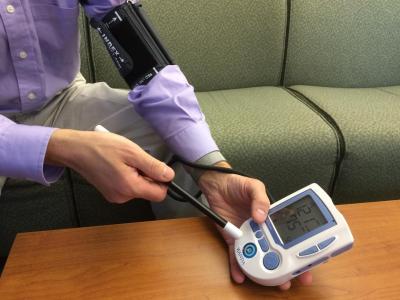In the wake of recent cyber attacks on a California hospital in which digital medical records were held ransom by hackers, it’s no surprise that protecting vital and private healthcare information is a concern for many.
Now, researchers from Dartmouth College have developed a digital “magic wand” to improve home healthcare and to prevent hackers from stealing your personal data.
The system, called “Wanda,” was developed in association with a project that aims to protect patients and their confidentiality as medical records move more and more from paper to electronic form, and as health care increasingly moves out of doctors’ offices and hospitals and into the home.

According to David Kotz, a professor of computer science at Dartmouth, wireless and mobile health technologies have great potential to improve quality and access to care, reduce costs and improve health, however they come with security and privacy risks.
One of the main challenges people encounter is setting up and maintaining secure wireless networks in their home. This failure can lead to compromised or stolen data, or even make devices like heart monitors and dialysis machines available to hackers.
Researchers discovered that this leaves people with three options when it comes to bringing new wireless devices into the home or workplace: configure the device to join the wireless local-area network, partner the device with nearby devices, and configure the device so it connects to the relevant individual or organizational account in the cloud.
Dartmouth student Tim Pierson developed “Wanda” in an effort to make it easier for new devices to be added to the home. The small hardware device comes equipped with two antennas separated by one-half wavelength and uses radio strength as a communication channel. Using Wanda, people simply pull the wand from a USB port on the Wi-Fi access point, put it close to the new device and point it. Within a few seconds, the wand securely transfers the secret Wi-Fi network information to the device. The same method can be used to transfer any information from the wand to the new device without anyone nearby capturing the secrets or tampering with the information.
“People love this new approach to connecting devices to Wi-Fi,” said Pierson. “Many of our volunteer testers remarked on the frustration they’ve encountered when configuring wireless devices at home and ask when they can take our wand home.”
The team expects Wanda applications to go beyond mere healthcare applications, and for a wide range of device management tasks.

Comments are closed, but trackbacks and pingbacks are open.